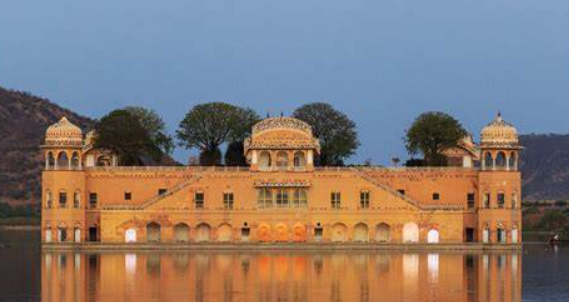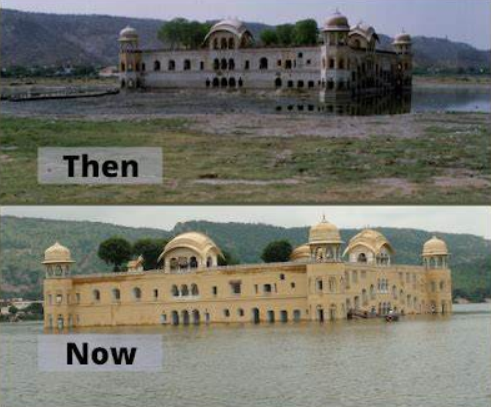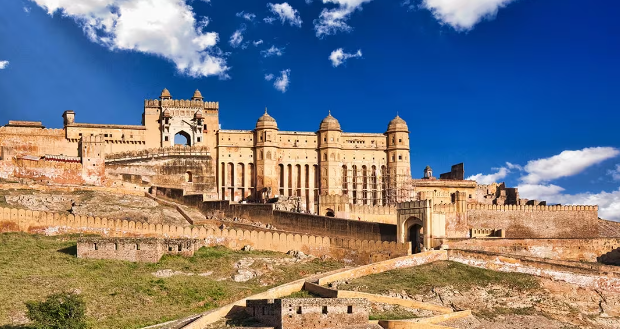Jal Mahal – History, Location & Reason To Closed
Jal Mahal, which translates to “Water Palace,” is situated in the center of Man Sagar Lake in Jaipur, the capital of Rajasthan, India.

Jal Mahal, which translates to “Water Palace,” is situated in the center of Man Sagar Lake in Jaipur, the capital of Rajasthan, India. This palace was initially built circa 1699, and it underwent significant renovations and expansions in the early 18th century under the direction of Maharaja Jai Singh II of Amber.
The Jal Mahal Palace exemplifies the grandeur of Rajput architectural style, which is prevalent in Rajasthan. This magnificent structure offers a stunning view of Man Sagar Lake, yet its isolation from the land makes it a prominent sight from the Man Sagar Dam located on the eastern shore of the lake, framed by the surrounding Nahargarh hills. Constructed from local sandstone, the palace features three stories, with the third level only present on the eastern side. This side remains hidden from the public promenade on the western side of the palace. When the lake reaches full capacity, the lower levels on the eastern side are submerged. The Jal Mahal includes a terrace adorned with a garden, which is complemented by four Tibaris oriented towards the north, south, east, and west. These Tibaris are crafted in the Bengal roof style, while four octagonal Chhatris at the corners of the roof enhance the monument’s architectural appeal. The palace has previously experienced subsidence and partial water damage, which have been addressed through a restoration initiative by the Government of Rajasthan.
Also Read: Qutub Minar Complex
Jal mahal Located

Jal Mahal, also known as the “Water Palace,” is situated in the center of Man Sagar Lake in Jaipur, the capital of Rajasthan, India. The palace was initially built circa 1699; subsequently, Maharaja Jai Singh II of Amber oversaw the renovation and expansion of both the palace and the surrounding lake in the early 18th century.
Who Built Jal Mahal


The palace was initially built in 1699, with subsequent renovations and expansions of both the building and the surrounding lake taking place in the early 18th century under the direction of Maharaja Jai Singh II of Amber.
Why Jal Mahal Is Closed

The Jal Mahal, located in Jaipur, is presently inaccessible due to an ongoing legal dispute. This historic structure, known as the “Water Palace,” was initially built around 1699 and underwent significant renovations and expansions in the early 18th century under the direction of Maharaja Jai Singh II of Amber. Positioned in the center of Man Sagar Lake, it provides stunning vistas of the adjacent Nahargarh hills. Although entry to the palace is prohibited, visitors can still appreciate its beauty from the exterior. The Jal Mahal exemplifies the Rajput architectural style, constructed from local sandstone and adorned with graceful cupolas and terraced gardens. Its current closure is tied to the legal matters concerning the Jal Mahal project, which encompasses both the palace and Man Sagar Lake. If you find yourself in Jaipur, do take the opportunity to enjoy the view from the lakeside.
Share this content:














1 comment